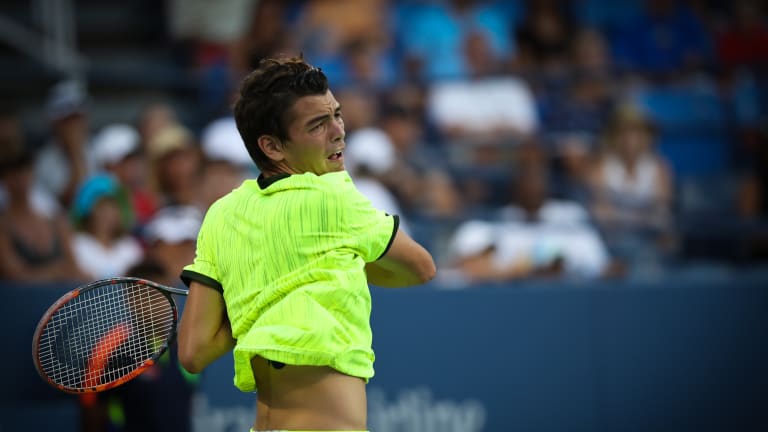NEW YORK—Jack Sock and Taylor Fritz are both from the U.S., they’re separated in age by just five years and they play the same sport for a living. Other than that, though, their on-court personalities couldn’t be more different.
The long and lanky Fritz has a classic tennis-player’s build, and a classic tennis-player’s demeanor; soft-spoken and outwardly calm, he can go five sets and hardly make a sound—his signature expression of anger is to pull up his shorts. Fritz has a strong serve and forehand, but his most notable shot is his long, flat, two-handed backhand. His weakness so far is his speed, or relative lack thereof.
Sock is an inch shorter and significantly stockier than Fritz. He has a modern tennis-player’s build, one made for today’s baseline push and pull. He’s as talkative on court as Fritz is taciturn; Sock chatters to his player box, punctuates winning points by barking “Yeah!” and enjoys a good jaw session with a chair umpire. He has a strong serve (in the 140-m.p.h range at times), but his signature attributes are his forehand and his feet. Sock, who hits as viciously and moves as quickly as anyone on tour, is an explosive athlete.
